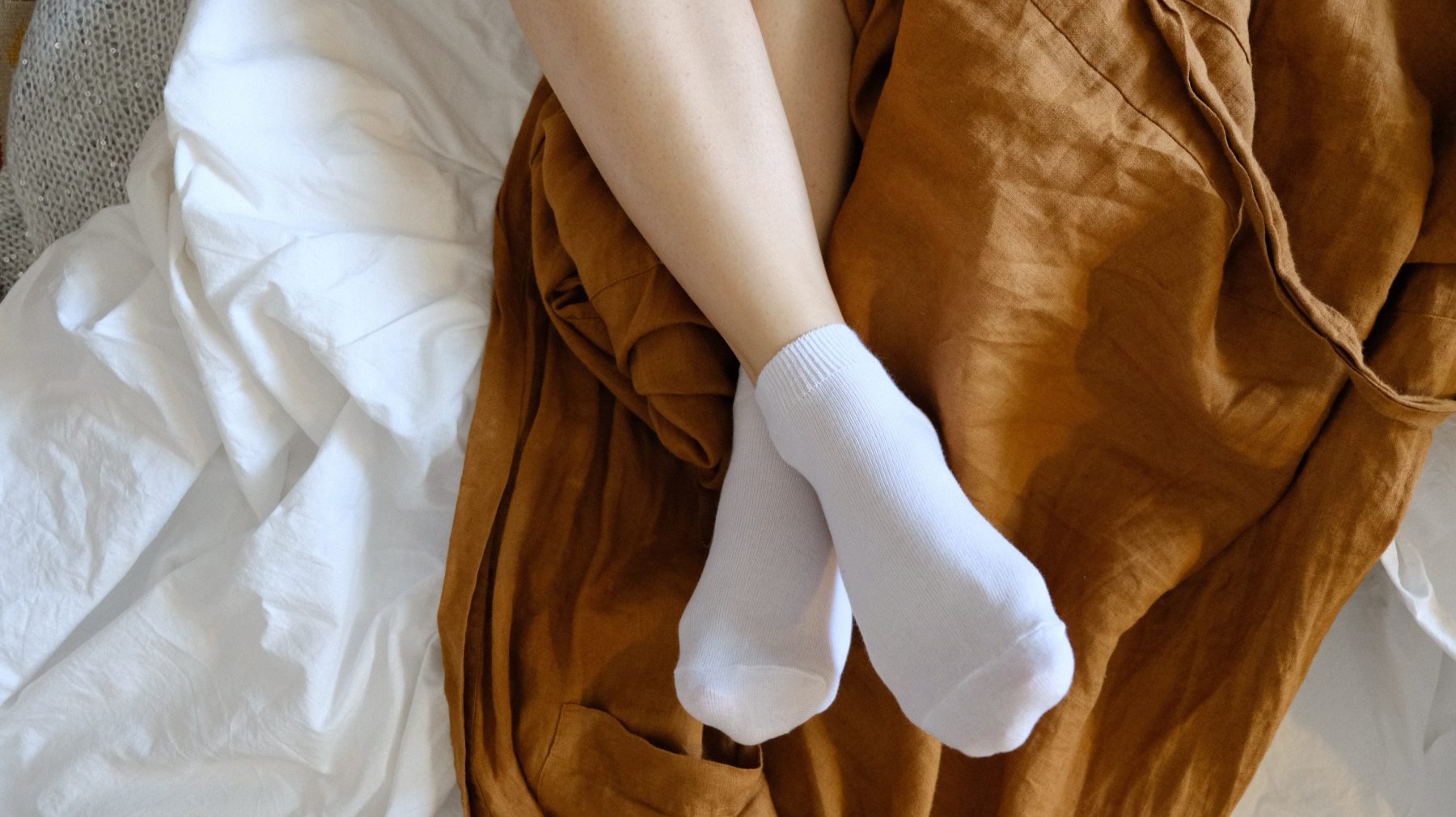As the crisp weather signals the change of seasons, and floors become cold in the morning, let’s give our feet some special attention to prepare for the winter months ahead. Feet are literally the foundation for our body: they allow us to be mobile, they pump blood back to our hearts, and they connect us to the world. Any issue with feet affects the whole body.
In cold weather, there is a risk that the floor will chill the feet and then chilblains, a precursor to frostbite, could occur. Insulation against the cold is warranted but consider your needs before buying socks. At FootCare by Nurses, we suggest considering fit and function before shopping. Seemingly inexpensive socks, too often combined with synthetic fibers, may seem like a bargain but turn out to be the cause of blisters, skin and fungal issues, suboptimal skin health, and pressure areas—all potentially costly choices. No one needs an infection, pain, or a foot-health-related fall.
A sock is meant to protect the foot. A sock that is too thick or loose makes it difficult to walk properly or put on a shoe. Socks that are too tight in the wrong place can cut off circulation and make feet colder. A sock that bunches can cause blisters; a sock that does not absorb perspiration and wick it away from your skin will make your feet feel colder, and that moist environment can encourage bacterial and fungal growth.
There is an art to choosing the right sock. Socks are an investment in health and wellness. Prioritize your needs—warmth, protection, comfort, compression, and fashion. Know what outcome you are looking for. A protecting, good-quality sock ought to conform to your foot shape, stay in place, and be a delight.
First choose the material—there are pros and cons.
-
Cotton is natural, soft, breathable, absorbent, easy to wash, and durable. It is often quite inexpensive. The downside: Cotton absorbs and holds moisture and has little insulating value. ($2-$16 per pair)
-
Rayon/ polyester/ nylon/ synthetic socks are inexpensive, soft, easy to wash, and durable, but do not wick moisture away. Perspiration clings to the skin of the feet leading to suboptimal skin health. They can be insulating, but aren’t breathable. ($2-$16 per pair)
-
Wool is an excellent insulator. It wicks moisture away and will keep your feet warm in frigid weather. Many people think they are allergic to wool socks because some wools can irritate the skin. However, Merino wool, alpaca, and yak have different fibers and are non-irritating. Wool is insulating,which means in the summer it keeps feet cool, and in the winter warm. Good woolen socks can be expensive ($16-$30 per pair)
-
Silk is insulating, wicking, and lightweight. Silk can be expensive, and hard to get. But an investment in silk socks is a treat.
I believe almost everyone can benefit from wearing compression socks.





